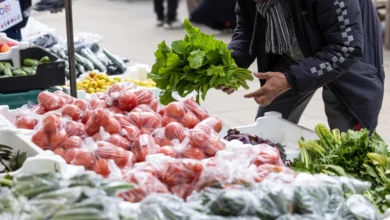Summer has arrived with its oven-fresh weather and in order to enjoy the season on the beach, rather than sick in bed, it’s important to keep some food safety tips in mind.
Many customers are having a hard time with food delivery in the summer. Ahmed, an avid delivery customer, explains that “as the food reaches my door step, it becomes unhealthy for eating.”
The risk of foodborne illnesses increases in the summer for a number of reasons. Summer weather is often hot and humid–a particularly friendly environment for the kinds of bacteria that cause people to get sick. The “danger zone” for the rapid growth of bacteria is from 4°C to 60°C. “In hot weather food bacteria reproduce much faster than during the winter,” says Atef el-Said, head of the microbiology unit, National Institute of Nutrition.
Of course, summer also encourages an increase in outdoor activities. When you cook or eat outside at picnics or on camping trips, you don’t always have easy access to the safety features found in kitchens, such as refrigeration and washing facilities.
It’s always important to use safe practices when handling and preparing food. However, there are extra steps you can take to minimize the additional risks of foodborne illnesses in the summertime.
One of these steps is simply being aware of the tolerance of each type of food to hot weather and acting accordingly.
Food types can be divided into three categories with different levels of hot weather tolerance. “A” category foods are those which spoil quickly–even within two hours of being cooked. Fish, meat, chicken, milk, mayonnaise and raw food as sushi and cold cuts fall under category A. these types of food need to be kept in a temperature less that 40°C.
Vegetables and fruits fall into category “B”–foods which are less sensitive to the sun and more sensitive to being stored in close proximity to one another, thus increasing the spread of bacteria that may only be affecting one item.
Nuts, peanut butter and crackers are some of the foods which fall into category “C”. These are foods that remain safe for the longest period of time in hot and humid weather.
It is strongly advised to cook food at home or get it from a trusted source during the summer. If everything in the cooking process is clean from the beginning, the likelihood of the spread of dangerous bacteria is minimized. Al-Said recommends that as a rule, all kinds of food should be expected to survive for approximately two hours in the heat.




